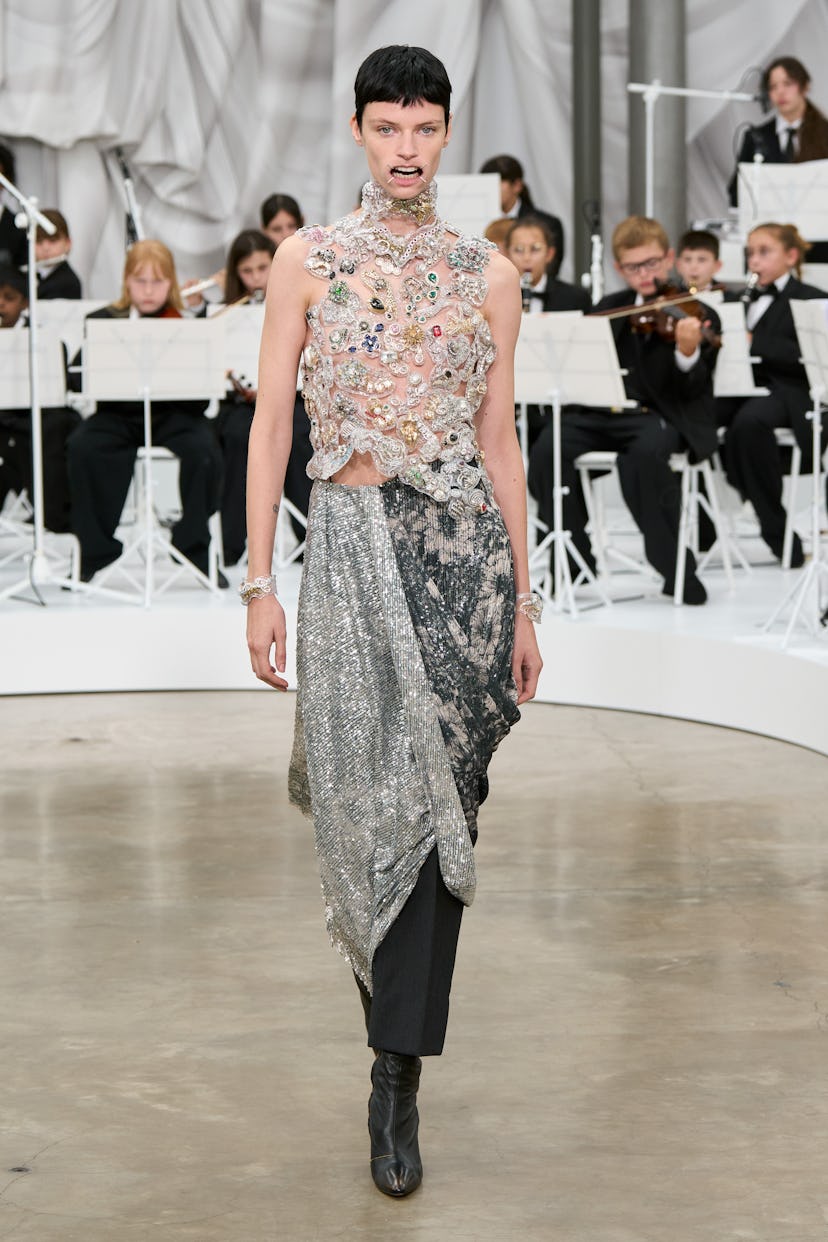Glenn Martens Begins Maison Margiela’s New Era With a (Literal) Bang

The first Margiela ready-to-wear womenswear collection led by newly named creative director Glenn Martens debuted with a literal bang. Setting the tone for the show were 61 child musicians, aged 7 to 15, some in their second month of music school, playing a chaotic mix of Beethoven, Mozart, and Tchaikovsky, drumsticks flailing. The display had guests smiling from ear to ear, and could have been considered a reference to the label’s infamous early spring 1990 presentation in which kids of all ages joined the runway festivities (and decorated the invitations with hand-sketched drawings).
The next big surprise of Maison Margiela’s spring 2026 show appeared when the first model stepped onto the runway. Martens had revised the brand’s classic four-stitch logo in the form of metal orthodontic staples holding each of the models’ mouths wide open. (Consider it a tribute to the house’ signature masked models.) The silver darts created a unified aesthetic, but quite literally made it so words couldn’t be spoken. It was classic Margiela: let the clothes talk!
Meanwhile, Martens’s clothes took a tamer approach than the work he created for his couture debut (and legendary looks at Y/Project) just a few months ago in July. For his ready-to-wear turn, the mostly neutral-hued collection was a minimalist’s dream, full of suiting, denim, and wardrobe staples like white button-downs. Maison Margiela called it “a series of concepts and proposals for real life,” in the show notes. “Presented here are new design suggestions, as well as re-introductions and evolutions of archival ideas, from us all at Maison Margiela.”
The collection opened with wearable tailoring made slightly weird: rounded, darted shoulders; low-crotch pants; or classic denim done formal. Slipdresses were placed on the outside of tailored jackets. Likewise, scarves were taken and fused onto outerwear.
Taking a cue from the medieval-inspired Margiela couture show in July that was technically Martens’s first collection, the designer focused on the effect of peeling 16th-century floral wallpaper via embossing onto knitwear. Some prints were made from the scans of real flowers. Silk jackets got the Margiela material treatment, becoming “plasticized” to withstand rain. Other pieces, like heel-less shoes, were nods to archival styles directly from the history books. The message here was loud and clear: the wearable can always mix with some vintage touches. Margiela lovers will undoubtedly appreciate the nuanced references that one may have to look twice to see.